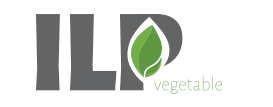Can I use patented technology under the ILP?
The Standard License Agreement provides the licensee with the right to use patented material such as patented commercial varieties for further breeding, and the right to commercialise the newly bred varieties. The ILP is not about technology licenses. In other words, if the patent also covers a technology the Standard License Agreement does not include the right to practice any technical step nor to use any other material (including but not limited to molecular markers or DNA sequences) claimed in the patent.
However, a patent may also cover generic methods and processes of breeding and seed production as well as a technical step of random mutagenesis. In such a case, the license under the ILP includes the right to use such generic methods and processes of breeding and of seed production as well as such technical step of random mutagenesis, including the use of relevant molecular markers and DNA sequences necessary to carry out random mutagenesis.
Take for example the following six claims:
- A Broccoli plant or parts or seeds thereof comprising in the genome an impaired version of the “Disease X Resistance (DXR) Gene” encoded by SEQ ID No: 1, wherein said impairment provides resistance against disease X.
- Use of a Broccoli plant of Claim 1 in breeding a new Broccoli variety.
- Method of manufacture of a Broccoli plant comprising the step of random mutagenesis to generate “Disease X Resistance (DXR) Gene” encoded by SEQ ID No: 1 in the genome of the Broccoli plant and a step of selection of the Broccoli plant.
- Use of an oligonucleotide of SEQ ID No: 2 in a method of oligonucleotide mediated mutagenesis to obtain a Broccoli plant of Claim 1.
- Use of an oligonucleotide of SEQ ID No: 3 for selection of a Broccoli plant of Claim 1.
- Use of an oligonucleotide of SEQ ID No: 3 in the selection step of Claim 3.
Claim 1 is included in the license. As Claim 2 covers breeding in general, the ILP license includes a right under Claim 2 to apply generic breeding methods and processes. Claim 3 is directed to a method of manufacture using random mutagenesis and is therefore included in the license.
Claims 4 refers to a specific technology, other than random mutagenesis, to make the plant of Claim 1 and therewith is not included in the license.
Claim 5 refers to use of an oligonucleotide for selection of a Broccoli plant of Claim 1 and is excluded from the license.
Claim 6 refers to use of an oligonucleotide in the selection step of Claim 3, necessary to carry out random mutagenesis and therewith is included in the license.
